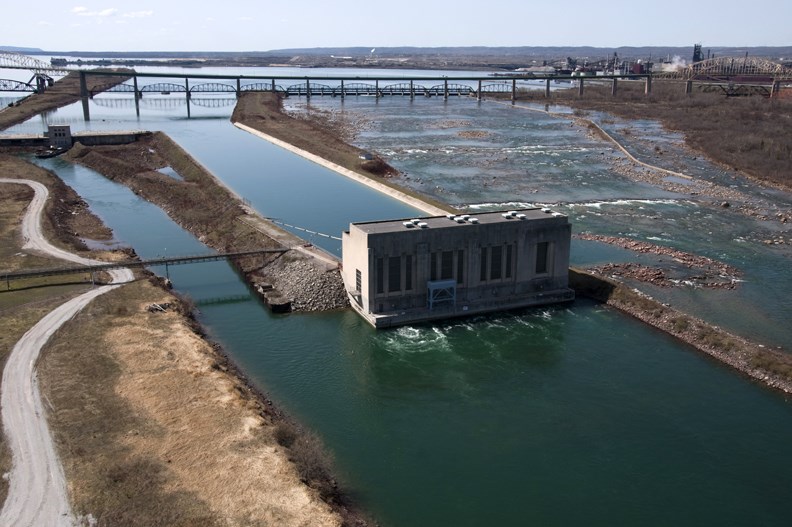NEWS RELEASE
INTERNATIONAL LAKE SUPERIOR BOARD OF CONTROL
*************************
Wet conditions returned to the Lake Superior and Lake Michigan-Huron basins in February and water levels remain well above average.
The monthly mean level of Lake Superior in February was 183.58 m, the 2nd highest on record (1918 - present) and just 5 cm below the record-high set in February 1986. Lake Michigan-Huron’s mean February level was 176.74 m, the 12th highest on record and the highest since 1997.
The high levels coupled with strong winds and waves have resulted in shoreline erosion and coastal damages across the upper Great Lakes system. Additional shoreline erosion and coastal damages may occur this spring should active weather continue.
In consideration of the continuing high water levels in the upper Great Lakes, the International Lake Superior Board of Control, under authority granted to it by the International Joint Commission (IJC), continues to maximize outflows to the extent possible, and will release outflows up to 2,510 cubic metres per second (m3/s) through the winter months.
This flow is 100 m3/s more than the normal winter maximum prescribed by Regulation Plan 2012. Actual outflows may vary depending on hydrologic and ice conditions, as well as maintenance activities at the hydropower plants on the St. Marys River.
All hydropower plants have been directed to operate at their maximum capacity, and a higher than normal flow rate is being released through the St. Marys Rapids this winter. Further increases in outflow are not possible at this time, as flows through the St. Marys Rapids cannot be safely increased when the Compensating Works structure becomes frozen in ice.
The Board will continue to monitor conditions and increase flows as soon as ice conditions permit. The Board is also considering further options to address the high lake levels, including a strategy that would allow it to release higher flows than prescribed by Regulation Plan 2012, starting in spring.
The Board stresses that hydrologic conditions are the primary driver of water level fluctuations. Water levels of the Great Lakes cannot be fully controlled through regulation of outflows, nor can regulation completely eliminate the risk of extreme water levels from occurring during periods of severe weather and water supply conditions.
It is not possible to accurately predict such conditions weeks in advance, but given the current levels of the lakes and the possibility that wet conditions may continue, the Board advises all those that may be impacted to prepare for the possibility of high water levels, should they occur this spring and summer.
The above average water supplies to Lake Superior in February caused the level of Lake Superior to fall 4 cm last month, less than the average decline of 5 cm in February. The Lake Superior level at the beginning-of-March is 34 cm above average, 16 cm above the level recorded a year ago at this time and the 2nd highest on record. The level of Lake Superior is expected to continue its seasonal decline in March.
The net water supplies to Lake Michigan-Huron were also above average in February, causing the level of Lake Michigan-Huron to rise 4 cm last month, while on average the lake declines 1 cm in February.
The level of Lake Michigan-Huron is 51 cm above its long-term average beginning-of-March level, 26 cm higher than it was a year ago and the 11th highest on record. The level of Lake Michigan-Huron is expected to continue its seasonal rise in March.
*************************
